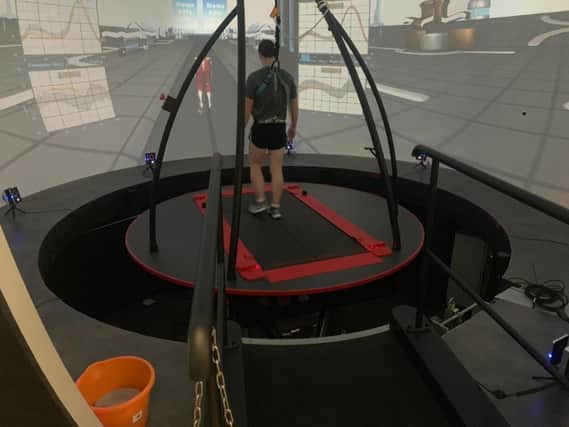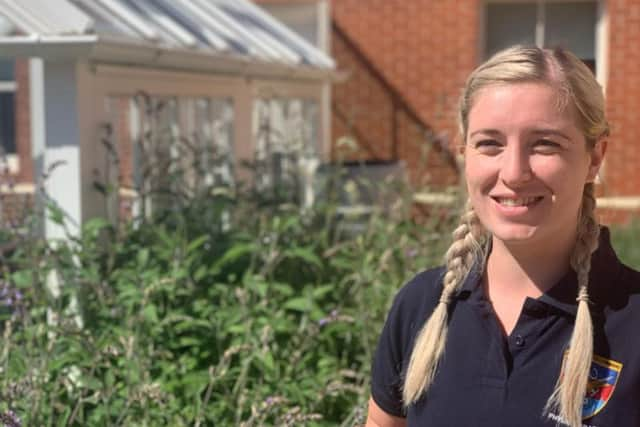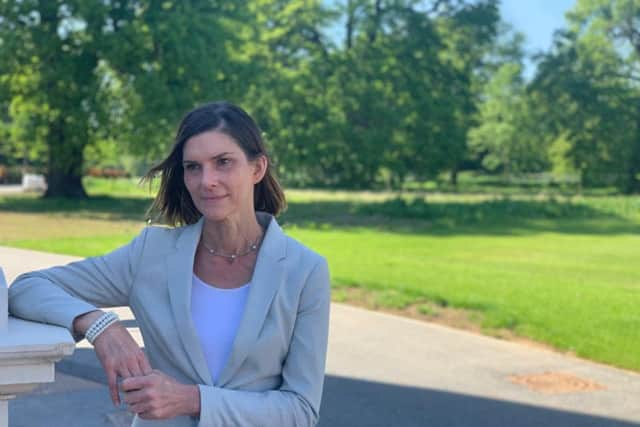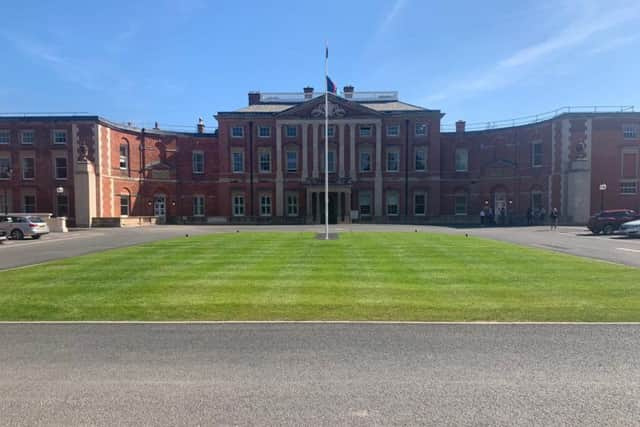NOTTS: Behind the scenes at the DMRC


But it doesn’t take long to work out there’s nothing old fashioned about the Defence Medical Rehabilitation Centre, at Stanford Hall.
The brand-new £300 million facility, funded largely by donations from companies and wealthy individuals, has some of the best equipment on the planet, and is already giving world-class treatment to wounded service men and women.
Advertisement
Hide AdAdvertisement
Hide AdIn time, it will be open to non-military patients, with Nottingham University Hospitals running a specialist rehabilitation unit for those with the most severe injuries.


Nestled in 400 acres of rolling Nottinghamshire fields near East Leake, it is the replacement for Headley Court, the Surrey MoD facility which has been the main rehabilitation base for decades.
The new scheme was the brainchild of the late Duke of Westminster, who served in the military for 40 years, and was heavily involved in the fundraising required.
He died in 2016, and was never able to see the building open fully.
Advertisement
Hide AdAdvertisement
Hide AdBut the military side of the site is now almost fully operational, and will soon be seeing 225 patients a week.


In around four years’ time, it is hoped the NHS will have its own building on the site and begin working in parallel.
The idea is that having the two facilities alongside each other will mean the best practices and expertise will benefit both.
The DMRC complex will then become the Defence National Rehabilitation Centre (DNRC) once the NHS element is added.
Advertisement
Hide AdAdvertisement
Hide AdBut as well as offering treatment to patients in the East Midlands, it will also have the national research and education centres for rehabilitation.


There are amazing facilities wherever you look at Stanford Hall, but perhaps the most eye-catching piece of kit at the new centre is the Carem– the only of its kind in Europe and one of only six in the world.
The £1.8 million Computer Assisted Rehabilitation Environment machine (Carem) is like a high-tech treadmill inside a large planetarium.
The patient is hooked up to dozens of sensors, and monitored by infrared cameras, while the inside of the planetarium shows whatever background the medics decide on.
Advertisement
Hide AdAdvertisement
Hide AdUsing virtual reality, their every movement is tracked, allowing medical experts to correct their gait, work out what areas of their body may be under pressure, or acclimatise them to different conditions.
As well as treating those injured in conflict, the DMRC also treats army personnel who are injured away from the front line.
When Lance Corporal Adam Nesbit, 24, of the Royal Logistics Corps, was riding his motorbike home after a shift, he smashed into a tractor near Wolverhampton.
He body was shattered, breaking his spine, three ribs, his tibias and fibias, and fracturing his skull, causing brain damage.
Advertisement
Hide AdAdvertisement
Hide AdMr Nesbit, who joined the army aged 16 and went to Afghanistan when he was 18, spent four months in hospital and then two and a half years intense rehabilitation at Headley Court and now at the DMRC.
Now, he is expecting to be medically discharged from the army later this year, and hopes to go on to be a chef, as he was in the army.
He said: “At Headley Court they rebuilt me, they made me who I was again. What they can do is just incredible.
“The facilities there were amazing, but here it really is next level.”
Advertisement
Hide AdAdvertisement
Hide AdZoe Poplawski, 28, is a physio originally from East Leake, who also worked at Headley Court before being transferred to the DNRC.
She said the facilities were ‘phenomenal’, and that there was a huge range of options available to her when treating patients.
She said: “It’s nice for me because I grew up knowing the house and a lot of people from the village used to come up, so it’s good to work here now as a professional and to see it like this.”
While the military side of the estate is up and running, plans are progressing for the NHS element.
Advertisement
Hide AdAdvertisement
Hide AdThe plan is for patients in the East Midlands to be able to use it for specialist rehabilitation.
Miriam Duffy is the project manager for the NHS side, and is based at NUH, which is leading the ambitious scheme.
As well as a specialist treatment centre, they plan to introduce the national research and innovation centre, as well as the national training and education centre.
She said: “On the clinical side, it will be one of the best in the country. We are anticipating that we will really be able to push the boundaries of what the speciality (rehabilitation) can offer, and in collaboration with our defence colleagues we can take that to another level.
Advertisement
Hide AdAdvertisement
Hide Ad“We will have access to some of the incredible facilities here as well, and we will learn a huge amount from that.”
Last year, the NHS side of the facility received £70 million from the Government, towards an estimate cost of £100 million.
It is hoped some of the remaining cost could come from the looking to get on board with the project.
Throughout the project, it has received political support from across the spectrum, including Nottinghamshire County Council and Rushcliffe Borough Council.
Advertisement
Hide AdAdvertisement
Hide AdRushcliffe Borough Council’s executive manager for communities Dave Mitchell said: “We are honoured to have the DMRC here in the borough and were delighted to work with all parties to ensure Rushcliffe could become the base of its new national home to assist so many military personnel and civilians.
“In time, it will bring even further levels of scientific research and innovation to Rushcliffe, neighbouring boroughs and the East Midlands, whilst supporting our borough with local jobs.”
Councillor Kay Cutts, the Conservative leader of Nottinghamshire County Council, was part of the delegation which greeted the Duke of Cambridge and the Prime Minister to the county last year when the facility was formally handed over by the Duke of Westminster.
She said: “It is a huge privilege for Nottinghamshire to host the DNRC at the Stanford Hall Estate.
Advertisement
Hide AdAdvertisement
Hide Ad“I know from my tour of the facilities that the centre will bring significant opportunities for research and training which will put Nottinghamshire at the forefront of rehabilitation and make our county a national hub for expertise in this area. This has potential to provide significant spin-off benefits for local patients, our hospitals and other health services.
“I was delighted that Chancellor Philip Hammond announced funding for an expansion of DNRC’s original remit during last year’s budget. The extension of services to treat civilians suffering major trauma injury, in addition to injured military personnel, means extra jobs, more visitors to the area and further enhances Nottinghamshire as a major national and international centre for research, training and treatment.”
Kit Sandeman , Local Democracy Reporting Service